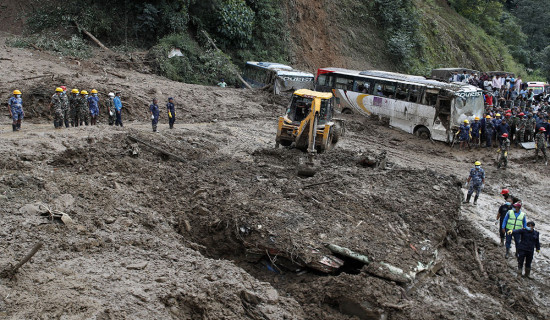- Monday, 30 September 2024
Women In Leadership
Nepali women, who constitute almost half of the total population, have gradually made strides in important sectors of the society. Their increasing participation in politics has greatly contributed to gender equality and expansion of democratic spheres. Their political participation directly engages them in decision-making forums, thereby pushing the gender-sensitive reforms in the governance system. If there are adequate representation of women in the parliament, women issues receive timely attention and concerned agencies are likely to address them promptly. This ensures better accountability to women and makes decision-making processes participatory, transparent and inclusive. Women have waged long and relentless struggles to end social, economic and cultural constraints and elevate their status on a par with their male counterpart. Various political and social movements spanning more than six decades have played a role in bringing the women onto the leadership rung in Nepal.
However, there is no long history of Nepali women’s participation in politics and parliament. It is only six decades ago that Dwarika Devi Thakurani became the first woman lawmaker and minister. With the establishment of multiparty democracy in 1990 and federal democratic republic in 2015, the country witnessed the qualitative growth of women's participation in national affairs. The 1990 constitution had a compulsory provision requiring at least five per cent women's candidacy in the election of House of Representatives (HoR). The number of women candidates gradually increased in parliamentary polls in 1991, 1994 and 1999. The 2015 constitution has remained a milestone in enhancing women's meaningful participation in the federal, provincial and local bodies. It has ensured 33 per cent of seats in both the lower and upper Houses for women and ensures at least one-third of women's representation in the federal parliament and provincial assemblies and 40 per cent in the local government.
Because of the clear constitutional provision, women lawmakers constituted 33.2 per cent in the first Constituent Assembly (CA). Currently, around 59.21 per cent of the elected representatives are men and 40.79 per cent women. Nepal has already seen woman as the head of state, Chief Justice and the Speaker. The women participation in civil service, judiciary, diplomacy, business and education has grown but they have still lagged behind in making effective presence in the key executive posts. Women's issues and concerns need to be integrated into the policies and programmes of the state, which will help make development plans and projects gender-sensitive. Women should be empowered not only to get involved in making decisions but also implementing them.
Nepal has devised several legal instruments with national and international dimensions to empower women. It has endorsed the United Nations Convention on the Elimination of All Forms of Discrimination Against Women (CEDAW) and increased proportion of female peacekeepers in the UN peacekeeping operations. It has made progress in inducting the gender perspective in the domestic policies. The gender perspectives are also useful in resolving conflict and moderating the geopolitical rivalry, thereby building peaceful, cooperative and harmonised world. Education is the key to women's empowerment. Educated and confident women are able to fight all sorts of gender stereotypes and misogyny that stand in their way. The support of family and society is equally important for women's advancement. Once women stand on their own feet economically and academically, they become capable in breaking through the glass ceiling and reach the positions they aspire for.















